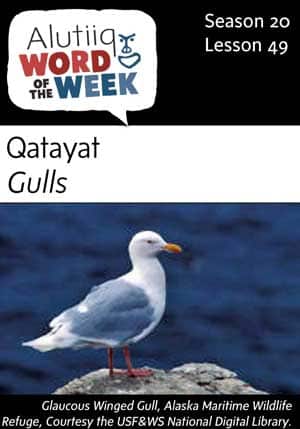Salmon conservation shouldn't narrowly focus on managing flows in streams and rivers or on preserving only places that currently have strong salmon runs.
Instead, watersheds need a good mix of steep, cold-running streams and slower, meandering streams of warmer water to keep options open for salmon adapted to reproduce better in one setting than the other, new research shows. Preserving that sort of varied landscape serves not just salmon, it provides an all-summer buffet that brown bears, gulls and other animals need to sustain themselves the rest of the year.
“In any one stream, salmon might spawn for two to four weeks,” said Peter Lisi, a University of Washington doctoral student in aquatic and fishery sciences, who studies the Wood River watershed in southwest Alaska.
“Animals like coastal brown bears and Glaucus-winged gulls gorge themselves at one stream for a few weeks and then just move to another stream that might have water temperatures a few degrees warmer and therefore support salmon populations that spawn at a later time,” he said. “It’s easy for animals to move when such streams are as little as a mile or two apart.”
|
|
A whole network of streams, some colder and some warmer, provides what Lisi and Daniel Schindler, UW professor of aquatic and fishery sciences, call “hydrological diversity.” Such diversity more than triples the time predators have access to salmon in a summer, from just a few weeks to more than three months in the watershed studied.
The researchers’ paper on landscape attributes that influence spawn times will be presented Aug. 8 in Portland, Ore., during the Ecological Society of America’s annual meeting.
“Both Glaucus-winged gulls and brown bears have very short growing seasons at high latitudes. Salmon are a key resource that allows these species to fatten up and achieve the necessary annual growth in this short period of time,” Schindler said. “A complex landscape results in streams of differing temperature so salmon populations don’t spawn at the same time. Predators and scavengers have a much longer window of accessibility.”
“We knew that salmon are an important seasonal resource for lots of predators and consumers. However, there is little appreciation for the importance of biological diversity within salmon for these consumers.”
The response of salmon to hydrologic diversity is what makes stocks viable over time and will probably make them better able to respond to climate change, Lisi said. Instead of focusing narrowly on flow regimes or trying to decide which individual streams and rivers to protect, a better goal would be to protect a wide range of hydrologic conditions, the co-authors said.
“Biological diversity within salmon stocks has important benefits to terrestrial ecosystems,” Schindler said. “This scale of variation in hydrology, geomorphology and biological diversity is often swept under the rug and dismissed as unimportant in activities such as river restoration, projections of climate impacts and fishery management.”
The paper, part of a session on linkages between aquatic and terrestrial systems, also describes how biological diversity in returning salmon are linked to the pollination of a flowering plant, something no other group has described.
Populations of kneeling angelica, 3-to-6-foot plants loaded with clusters of tiny white blossoms, don’t all bloom at the same time, even though sun and weather conditions might be uniform across a watershed. Instead, these streamside plants have evolved to bloom approximately 10 days after salmon typically arrive at a particular stream.
|
|
It takes about that long for salmon to start to die, many of which are killed by bears or die naturally after spawning. Blowflies lay eggs on the carcasses and the result is a population boom of maggots to take advantage of all the dead salmon. Those maggots emerge as adult blowflies the next summer just in time for the salmon run. Before laying their eggs, the blowflies swarm kneeling angelica flowers to feed on nectar, spreading pollen at the same time.
Previous research has looked at direct connections to plants, such as roots taking up nutrients when salmon carcasses decay, Lisi said. This is an indirect consumer pathway.
“Kneeling angelica are among the last plants to bloom. It’s fall, everything else is dying, most of the insects are gone but these plants hold out for the arrival of salmon,” Lisi said.
SOurce: University of Washington








